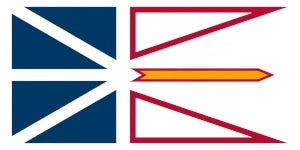Newfoundland and Labrador operates a progressive income tax system with eight tax brackets that apply similarly to the federal income tax calculations. For the 2025 tax year, residents pay 8.7% on the first $$44,192 of taxable income, 14.5% on income between 44,192 and $88,382, 15.8% on income between $88,382 and $157,792, 17.8% on income between $157,792 and $220,910, 19.8% on income between $220,910 and $282,214, and 20.8% on income between $282,214 and $564,429, 21.3% on income between $564,429 and $1,128,858, and 21.8% on any income exceeding $1,128,858. These rates represent some of the highest provincial income taxes in Canada.
The province offers various tax credits to help offset tax liability, with the basic personal amount being $11,067 in 2025, effectively creating a zero-tax bracket for initial income. Additional credits include the age credit, disability credit, caregiver amount, and medical expense credits. Newfoundland and Labrador also provide some province-specific benefits, such as the Newfoundland and Labrador Income Supplement and the Seniors' Benefit, which provide additional support to low-income residents and seniors.
Tax filing in Newfoundland and Labrador follows the integrated federal-provincial system used across Canada. Residents file a single tax return that calculates both federal and provincial obligations, with taxes typically withheld from employment income throughout the year. Self-employed individuals and those with investment income may need to make quarterly tax installment payments to avoid interest charges. The standard filing deadline is April 30th, with self-employed individuals having until June 15th to file (though payment for any taxes owed remains on April 30th).
Newfoundland and Labrador's tax system is significantly influenced by its economic circumstances, particularly its reliance on natural resource revenues from offshore oil production. During periods of high oil prices, the province has occasionally been able to implement modest tax reductions or enhanced credits. Conversely, when resource revenues decline, the province sometimes needs to increase taxes or implement temporary surcharges to maintain fiscal stability.
The province applies a 15% Harmonized Sales Tax (HST), consisting of the 5% federal GST and a 10% provincial portion. This consumption tax works alongside income taxes to generate revenue for provincial services. Unlike some provinces that have reduced or eliminated certain HST components, Newfoundland generally maintains consistent application across most goods and services, with only standard exemptions for basic groceries, prescription medications, and specific other categories.
Newfoundland and Labrador occasionally implements targeted tax incentives designed to address its particular economic and demographic challenges. These have included credits for new graduates who remain in the province, small business tax reductions, and innovation incentives. The province also adjusts its tax system to account for its higher cost of living in remote areas, with specific allowances for residents of isolated northern communities. The overall tax structure reflects the province's ongoing balance between generating sufficient revenue to fund services across a geographically dispersed population while maintaining enough competitiveness to retain and attract residents and businesses.
Newfoundland and Labrador Income Tax Brackets Changes
Newfoundland and Labrador's income tax brackets and credits are indexed annually using the province's Consumer Price Index (CPI). For 2025, the tax brackets, basic personal amount and other credits were increased by 2.3% down from 4.2% for 2024.
| 2025 Bracket | 2024 Bracket | Tax Rate |
|---|---|---|
| Up to $44,192 | Up to $43,198 | 8.7% |
| $44,193 to $88,382 | $43,199 to $86,395 | 14.5% |
| $88,383 to $157,792 | $86,396 to $154,244 | 15.8% |
| $157,793 to $220,910 | $154,245 to $215,943 | 17.8% |
| $220,911 to $282,214 | $215,944 to $275,870 | 19.8% |
| $282,215 to $564,429 | $275,871 to $551,739 | 20.8% |
| $564,430 to $1,128,858 | $551,740 to $1,103,478 | 21.3% |
| More than $1,128,859 | More than $1,103,479 | 21.8% |
Newfoundland Personal Amounts 2023 - 2025
| 2023 | 2024 | 2025 | |
|---|---|---|---|
| Basic Personal Amount | $10,382 | $10,818 | $11,067 |
| Age Amount | $6,627 | $6,905 | $7,064 |
| Spouse/Common-Law Partner | $8,483 | $8,840 | $9,043 |
| Eligible Dependant | $8,483 | $8,840 | $9,043 |
Source: Government of Newfoundland and Labrador
Similar to other provinces, Newfoundland's CPP contribution rate is 5.95%, CPP2 contribution rate is 4%, and EI premiums rate is 1.64% (down from 1.66% in 2024).
Newfoundland and Labrador Low-Income Tax Reduction
The low-income tax reduction (LITR) is a tax reduction designed to reduce the income tax owed by low-income families and individuals. For 2024, LITR eliminates the provincial income tax for individuals with a net income of up to $23,390 and families with a net income of up to $39,551.
Furthermore, individuals with a net income of up to $29,478 and families with a net income of up to $49,039 can receive a partial reduction.
NL Income Supplement and the NL Seniors’ Benefit
The NL income supplement and NL Seniors’ benefit are refundable tax credits, meaning eligible individuals and families can receive these credits even if they do not have to pay income tax. These benefits are paid out quarterly.
The NL income supplement is available to low-income individuals, families and seniors. The maximum credit amount is $520 for single individuals, $589 for those with a partner, plus $231 per child under 19.
Meanwhile, eligible seniors can also receive the NL Seniors’ Benefit with a maximum benefit amount of $1,516.
Other Credits in Newfoundland and Labrador
Other credits that can be claimed on your NL provincial tax return for 2024 include:
- Caregiver Amount
- Childcare Amount
- Medical Expense Amount
- Charitable Donations Credit
- Disability Amount
You can find a list of all credits available in NL on the NL government website’s personal income tax page.
